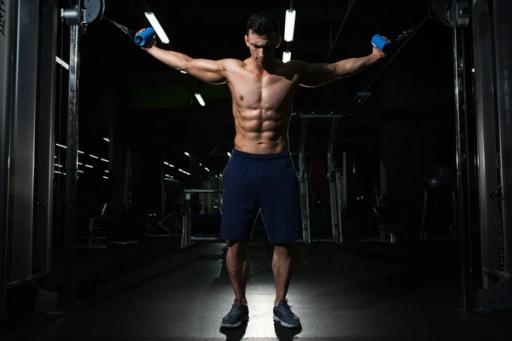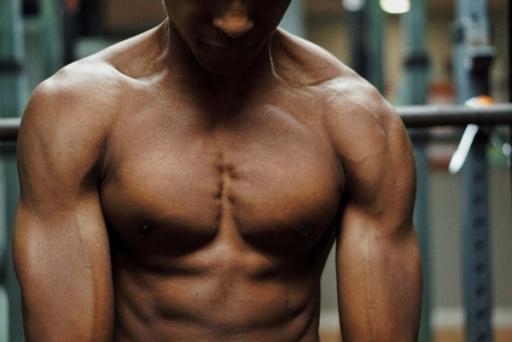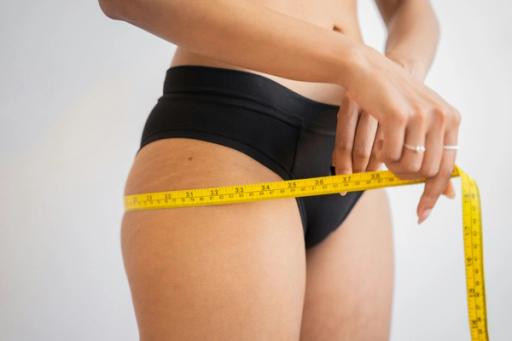
If you’ve ever tried to shed fat or build muscle, you know the two can seem like competing goals. For example, you might try to lose fat, only to discover that you’ve lost more muscle than anything else. Or, you might focus on building muscle, only to realize that I’ve put on a bunch of weight, and most of it is fat. Fortunately, with the right approach, you can achieve both goals simultaneously. This guide will show you how to gain muscle and lose fat simultaneously. You’ll learn how to build muscle while shedding fat efficiently, see noticeable progress faster, and optimize your body composition with innovative, sustainable strategies. A calorie tracker is a helpful tool that can get you closer to your goals. It can help you build muscle while shedding fat. So, How to Hit Your Macros?
Calorie tracker from Cal AI can help you achieve your goals by simplifying the process of hitting your macros. With this tool, you can optimize muscle gain and fat loss to improve your body composition and overall health.

If you want to get in shape, your goals are twofold: losing fat and gaining muscle. Achieving just one of these training objectives is no small feat. Achieving them together is a whole different ballgame. Scientists and fitness professionals call this "body recomposition."
In other words, changing your body's composition by lowering body fat and increasing muscle mass. The biggest hurdle you'll have to clear on your journey to accomplishing these goals is that they require vastly different demands.
To lose fat, you need to burn more calories than you're taking in. To build muscle, your body needs to increase protein intake and prioritize strength training to build muscle fibers. Eager to make significant changes, people often try to achieve both simultaneously. The question is: Is it even possible to both lose fat and gain muscle simultaneously? We asked the experts.
First, two essential concepts exist: how you lose weight differs from how you gain muscle, these goals often conflict. To lose fat or weight, your body needs to be in a caloric deficit, meaning you are taking in fewer calories per day, making it more difficult for your body to maintain its current weight.
What is problematic here is that your body needs to be at a caloric surplus to gain muscle. This surplus provides the energy your body requires to repair itself and then build muscle mass.
“Some people may think it’s impossible just based on pure science alone,” Silvestri said. “Because if you find yourself in a situation where you are constantly at a caloric deficit, your body then may start to break down other parts of itself for energy requirements. This can unfortunately put you in a situation where your body starts breaking down muscle instead of fat for energy.”
Ugh, say it isn’t so! How can you gain muscle while losing weight when science works against you?
A 2020 meta-data analysis from the Strength and Conditioning Journal suggests that losing fat mass and gaining muscle may be possible. Nevertheless, there's one issue with this, all of the studies compiled for the report were based on small samples of young athletes, lacking an inclusive sample population.
Further research needs to be conducted to understand how body recomposition happens to different subjects and whether these results apply to other demographics. Though burning fat and building muscle concurrently may be possible, it's not necessarily optimal, says Lee Boyce, C.S.C.S., an MH Advisory Board member.
Boyce warns that aiming for both simultaneously may cause a slower rate of change for both goals to be reached. A more effective approach is to prioritize one goal before the other, specifically muscle building over fat loss. The good news is that emphasizing muscle building will spark some habits and physiological responses that may help burn away unwanted fat.
If someone focuses on building muscle first, "the byproduct of that would be trigger[ing] some fat loss," says Kurt Ellis, N.S.C.A., of Beyond Numbers Performance. "It's going to enable you to build habits that are going to be a lot more favourable for you long term."
Building muscle mass increases metabolic rate, meaning the body will burn slightly more calories, since it takes more energy to maintain muscle tissue than adipose tissue (a.k.a. body fat). For example, assume you and your gym partner are the same height and weight. You have a body fat percentage of 10 percent, and theirs is 20 percent.
On any given day where you move the same amount, you will likely burn a few more calories than they will (assuming, too, that neither of you has any other health problems that may affect your metabolism). If you follow the proper steps, focusing on muscle building may bring about the fat loss you're looking for even more quickly.

You need to incorporate resistance training into your exercise routine to gain muscle. This puts your muscles under tension, creating micro-tears in the muscle, which your body will repair by creating more fibres. As we've already established, you must burn calories to lose fat. Luckily, strength training does both of those things.For longevity, focus on strength training with smaller bits of low-intensity cardio to build muscle. You'll still burn calories, which is what you need to lose fat mass. See below for some guidance on where to start.
You've probably been preached at by some muscle-bound bro about the importance of protein. It's not just hype; protein is the building block of muscle tissue and deserves its praise. If you don't have enough, your muscles may begin to break down. This is especially important to consider when you're having a calorie deficit.
Limiting calories is the key to fat loss, but if you also limit your protein, you'll lose muscle mass, says Boyce."If you want to be adding muscle without adding too much weight, you can't be in a surplus to do it," Boyce says. "So, the challenge is creating that [low] calorie intake, but modifying the nutrient choices that are going to make up those calories."
Make high-protein food sources a more significant staple in your nutrition plan. Protein also reduces the levels of the hormone that causes hunger, ghrelin, in your body so that it may keep you fuller longer. That’s good news for preventing snacking and other sources of excess calories throughout your day.Boyce suggests consuming at least 1 gram of protein per pound of body weight. As much as possible, do this with accurate food sources, like chicken, turkey, and tofu, and make up the difference with supplements, like protein powders.
Beware of coming on too hard, too fast when starting a fitness routine. Overtraining can lead to injury, which could take you out of the gym altogether. That's why prioritising recovery is essential if you're trying to burn fat and gain muscle, Ellis says. Recovery allows the body time to repair after intense workouts, so don't neglect your rest day.Proper rest also means proper sleep, Ellis says. A 2020 study published in the Medicine & Science in Sport and Exercise journal found that lack of sleep led to a lower release of cytokines – the proteins that build up our muscles.
Your emotional support water bottle is a vital sidekick to keep handy throughout the day. Hydration is also super crucial for body recomposition and everyday life.“Being hydrated and sleeping are so critical to basic human function. If you do all these things and you're not drinking water or you're sleeping four hours a night, it's either not going to work at all or work so much slower than if your body is in a good state,” says Phil Catudal, a NASM-certified personal trainer.
It sounds confusing that you must eat fewer calories than you burn to lose fat, but you must eat more calories to build muscle. It's pretty simple when you learn about calorie cycling: modifying your calorie and macronutrient intake to match your daily goal.
First, you need to figure out your maintenance calories, or how many calories you burn daily without exercise. You can see a certified personal trainer, dietitian, or other health professional to find this number or use an online calorie calculator. This one from Mayo Clinic uses the Mifflin-St, Jeor equation, which pros consider the gold standard.
You should consume enough calories on the day you exercise cardio to meet your maintenance number. Consuming maintenance calories on a cardio day ensures you're in a slight deficit to promote fat loss, but not so large that your body uses muscle tissue as fuel. We want the muscle!
On days that you do a strength training workout for 30 minutes or more, eat more calories than your maintenance number with a focus on protein. Depending on how much muscle you want to put on and how quickly you want to gain it, add 5% to 15% to your maintenance calories.
On days when you don't work out, eat slightly less than your maintenance calories—decrease that number by 5% to 10%. This number is called your "rest day calories."
Think of it this way: You consume new calories daily, and your body must decide what to do with them. Your body has three basic choices:
If you're looking for a body transformation, you don't want to store calories as fat. But you want your body to use new calories to repair the muscles you broke down during weight-lifting workouts.
So, you'll eat more calories (and protein) on weight-training days so your body uses those calories and nutrients to fuel muscle repair and thus muscle growth. And you'll eat fewer calories on cardio days and days that you don't work out because you want your body to use the fat it already has as fuel, not new calories.
Resistance training should be at the center of your workout plan. Balance out this training with other types of exercises like:
One practical approach is dose-response training. Research has shown that you should do five sets of 10 repetitions per resistance exercise to promote body composition changes. Choose between multi-joint or single-joint exercises. Multi-joint exercises include:
Bicep curls, dumbbell flies, and calf raises are single-joint exercises. Both types can reduce body fat and increase muscle mass.
You do not have to go to a gym. Some of these movements can be done with your bodyweight, a resistance band, or hand weights:
Weightlifting and HIIT workouts are key for muscle gains and shedding fat. It may sound daunting to get into lifting, but “don’t be scared of weight training,” Oprea says. It's a significant part in accomplishing fat loss and muscle gains simultaneously because weights help you put on more muscle mass and burn more calories and fat more efficiently, says Khader.
The experts recommend a few different workout schedules for body recomposition. Catudal recommends three to four days a week of 45-minute strength and weight-training workouts with 60-second rest periods between exercises.
Oprea's go-to is a Tabata workout, which lasts four minutes each round. You do 20 seconds of all-out intensity, followed by 10 seconds of rest, repeated eight times. Also, Dr. Ali adds that aerobic exercise can be helpful: “It’s a good idea to have a combination of aerobic and resistance-type exercises—aerobic can help you burn calories and is good for cardiovascular health, while resistance training helps to build muscle.”
Whether you enjoy going for 30-minute walks with your dog, swimming laps at the gym, or hopping on your Peloton for a ride, these aerobic exercises are all worthwhile for your muscle-gaining journey.
Choose a few exercises. Perform them like a circuit: Do each exercise about 10 times, with a short break between them. Aim to complete three sets. As you get accustomed to resistance training, aim for five sets with less rest in between.
Calories give your body the energy it needs to function, but can also be stored as fat. To keep that from happening, you have two options: Reduce your calorie intake or increase your physical activity.If you want to lose weight (rather than stay at the same weight but increase muscle while decreasing fat), consider creating a calorie deficit. First, you'll want to determine the baseline number of calories per day your body needs.
If you want a more specific analysis, Khader recommends having a dietitian perform a bioelectrical impedance analysis (BIA), a highly accurate test for body fat and muscle mass done through electrodes to determine how many calories your body needs. “You don't want to go below 1,200 calories a day, because then you also start to break down muscle,” says Dina Khader, RD, CDN, a registered dietitian and integrative nutrition consultant.
You can also try calorie cycling (sometimes called metabolic confusion), which involves changing how many calories you aim to eat every day. There are several ways to implement the strategy. You may opt for a high-calorie day followed by a low-calorie day, or have an entire week of high-calorie days before having another week of low-calorie days (or somewhere in between).
Changing your caloric intake will confuse your body (and metabolism), encouraging it to burn more energy than if you stayed at the same calorie intake each day.
To lose weight, “the whole idea is to be in a calorie deficit overall,” Dr. Ali notes. “You can do that intermittently, but different schedules and techniques work differently for different people.” For some, it’s better to be on a calorie deficit daily; for others, calorie cycling feels more approachable, he says.
If you don't want to focus too heavily on calories, that's an option too, according to Oprea. “I never want my clients to obsess over their calorie intake,” she says. “I personally don’t count calories and numbers, but I focus on correct serving size and to make sure every time you eat, you get a complex carb and a protein.”

Fatima Cody Stanford, MD, MPH, MPA, an associate professor of medicine and pediatrics at Harvard Medical School and an obesity medicine physician at Massachusetts General Hospital, suggests getting a simple tape measure and checking your waist circumference. (The CDC has detailed information on exactly where to measure yourself.)
A waist circumference of greater than 35 inches could mean that you have a higher risk of developing obesity-related conditions, the CDC says.
Somebody composition scales can break this down for you, but Dr. Ali points out that knowing their reliability can be challenging. Similarly, a formal body composition test, such as a dual-energy X-ray absorptiometry (DEXA), can help, says Bryant Walrod, MD, a sports medicine physician at The Ohio State University Wexner Medical Center and head team physician for The Ohio State Buckeyes football team. Just know that these tests can be expensive.
You can find a body composition test at a gym near you. Various Planet Fitness, YMCA, Edge Fitness, etc. locations offer InBody scan, a non-invasive test that assesses body muscle, fat, and water. Your gym may offer this for free or at a discounted rate. Plus, with their handy map feature, you can find an InBody scan location near you.
Fitness trackers and apps are great for monitoring your progress. Tools like Cal AI, Fitbit, MyFitnessPal, or Garmin can monitor your calorie intake, activity levels, and sleep patterns. In contrast, others monitor body fat percentage and muscle gain to give you a clearer picture of how your body is transforming. Tracking your workouts and meals in real time ensures you hit your daily goals. Logging protein intake helps you stay on track for muscle repair, while monitoring steps or cardio sessions ensures you’re burning enough calories for fat loss.
Tracking your progress is critical to staying motivated and adjusting your plan when necessary. Instead of focusing solely on the number on the scale, measure changes in your body composition using a tape measure to track your:
If you prefer leaving it up to technology, use an app to monitor your metrics, like protein and calorie intake, for a more comprehensive picture. Remember, it’s all about celebrating the small wins like your clothes fitting better, increased strength, and changes in body shape to keep yourself motivated throughout the journey.
Cal AI transforms calorie tracking with cutting-edge AI technology. Just snap a photo of your meal, and we'll do the rest.
Our app combines your phone's depth sensor with advanced AI models to:
With 90% accuracy on visible foods and multiple tracking options like:
We've made nutrition tracking effortless. Whether you're scanning a full meal or a quick snack, Cal AI
Our AI learns from your feedback to improve accuracy. It includes personalized insights and smart reminders to keep you on track. Cal AI makes achieving your fitness goals simpler than ever.
Track your calories with your camera using Cal AI's calorie tracker today!